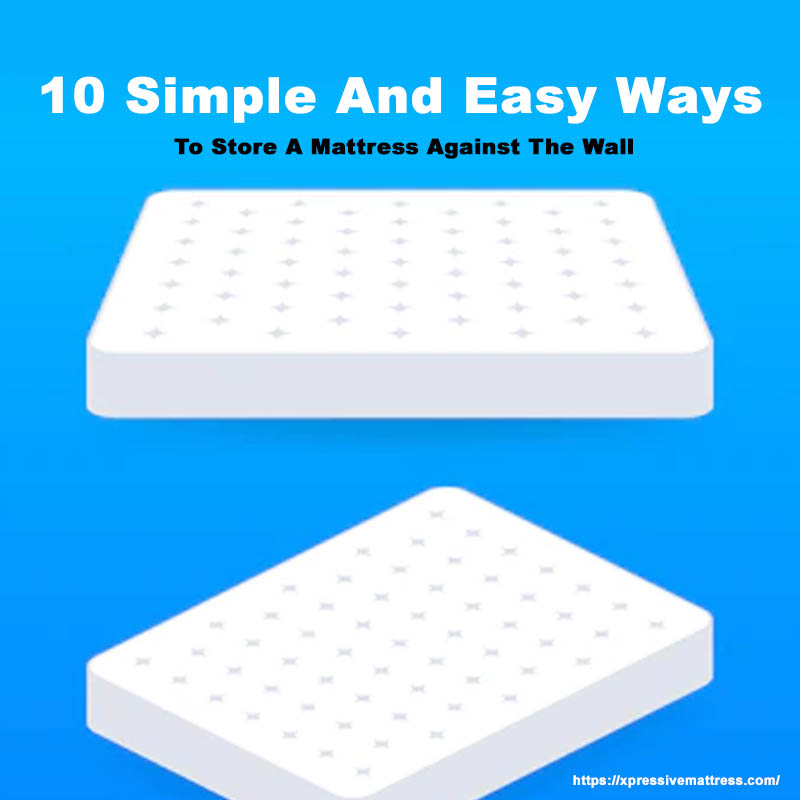Covering up a hole in an air mattress is not as difficult as it may seem.
With the right materials and tools, you can easily patch your air mattress, so it’s good to go again!
Here are some tips on how to cover up a hole:
- Make sure you have all of the necessary supplies –
- Adhesive tape or glue for vinyl mattresses.
- Patches are made from heavy-duty fabric such as canvas or denim. Scissors.
- Needle and thread (for cloth mattresses).
- Sandpaper (optional).
- Clean around the area where there’s a tear with soap and water.
- Cut out two pieces of material slightly larger than the size of your repair job – one piece should be placed underneath while another goes over the top.
- Use either adhesive tape/glue OR sew both layers together using strong stitches along each side until secure.
- Finally, inspect the entire surface once more before inflating fully!
This method works best when done correctly because it ensures no further damage will occur due to wear and tear caused by everyday usage – plus, it’s cost-effective too!
What Materials Do You Need To Cover A Hole In An Air Mattress?
To cover a hole in an air mattress:
- Locate the area where there is a puncture on your air mattress.
- Then cut out two pieces from the patch material that are slightly larger than the size of this punctured area.
- Next, apply some adhesive to one side of each piece before placing them over both sides of the damaged spot with their sticky surfaces facing inward towards each other, so they overlap by at least 1/2 inch around their edges.
- Press firmly for several seconds until it sticks securely onto itself and onto your inflatable bedding item’s surface fabric layer underneath it too!
- Finally, use a dampened soft cloth to wipe away any excess glue residue left after applying these patched sections together. Make sure not to let moisture seep into those areas near seams, which could cause further damage if done incorrectly!
How To Find The Hole In Your Air Mattress?
Finding a hole in your air mattress can be tricky, but it’s not impossible.
Here are some tips to help you find the leak:
Check for visible signs of damage.
Look closely at all sides and seams of the mattress for any tears or punctures that could have caused an air leak.
Listen carefully
Put your ear close to each side and seam while someone else blows up the bed with an electric pump.
If a hissing sound comes from one area, this may indicate where the hole is.
Use soapy water
Mix dish soap and warm water into a spray bottle, then lightly mist over every inch of the surface on both sides (including around valves) until bubbles start forming, showing you exactly where the problem lies!
Finally, make sure to patch up any holes as soon as possible using adhesive patches designed for inflatable mattresses before they become bigger issues down the line!
How To Clean The Hole And Prepare The Surface For Patching?
To clean the hole and prepare the surface for patching, you will need a few supplies: sandpaper or steel wool, a putty knife, vacuum cleaner with a brush attachment.
- Use your sandpaper or steel wool to remove loose paint chips from around the hole’s edges.
- Then take your putty knife and scrape away any dirt that may have accumulated over time.
- Next, attach your vacuum’s brush attachment to suck up all dust particles left behind by scraping off debris earlier on.
- Finally, wipe down the area surrounding the repair site with a damp cloth. So no residue is present when applying patch material later on!
It’s important not only to ensure no obstructions blocking access into the damaged area but also to ensure the entire space has been thoroughly cleaned before beginning repairs.
This way, the adhesive can properly bond to the wall without issue afterward!
What Is The Best Way To Apply The Patch?
The best way to apply a patch is by following these steps:
- Please read the instructions with the patch carefully and ensure you understand them before beginning.
- Clean any dirt or debris around where you will be applying it. Use an alcohol swab if necessary for extra cleanliness.
- This helps ensure better adhesion of the adhesive backing on your chosen product.
- Measure how much material (fabric, vinyl .) needs to be covered to get full coverage over whatever area requires repair/patching. Use scissors or other cutting tools as needed here!
- Peel off one side of the protective paper covering from the backside of the patch and place it onto the fabric surface – press firmly into position. Hence, there are no air bubbles underneath its edges when finished pressing down all sides evenly against the substrate’s texture and shape contours.
- Repeat the same process for the second piece if two-piece patches were purchased instead of just one large sheet-type item).
- Allow 24 hours minimum drying time after application before wearing the garment again normally without fear of tearing away at the newly applied fixative layer(s). that’s due to there not being fully cured yet a somewhat pliable state during the first few days post-installation period ends…and voila!
- You have successfully patched up clothing articles like a pro would do too 🙂
How To Reinflate The Mattress After Patching The Hole?
To reinflate the mattress after patching a hole, you’ll need to follow these steps:
- Ensure that your repair kit includes all necessary items for fixing and inflating your mattress. An adhesive patch or glue, scissors, an air pump (manual or electric), needle-nose pliers, and a valve adapter.
- Clean up any debris around the area where you patched it with warm water and soap.
- Let dry completely before proceeding further.
- Place one end of the hose attached to your air pump onto either side of the repaired area on top of its corresponding flaps. Make sure they are securely fastened together using tape if needed!
- When ready, go ahead and start pumping away until desired firmness is achieved overall throughout the entire surface evenly distributed across the entirety sleeping space provided by said item in question here today now at hand…
- Then attach the other end to a nearby outlet port/valve opening near the bottom edge bedding material.
- Once completed filling out the form required information regarding the amount of pressure used.
How To Check If The Patch Is Effective?
Checking if a patch is effective can be done in several ways.
- You should check the installation log to ensure that all files have been installed correctly and completely.
- Test any new features or bug fixes included with the patch. This will help determine whether they are working as expected.
- Review systems performance metrics such as CPU and memory utilization before and after applying the patch. These may indicate an improvement or degradation due to changes made.
- Finally, compare application logs from both pre-patch and post-patch states. Look for errors that could suggest problems caused by the incorrect implementation of code updates within the patches themselves:
- Check Installation Logs
- Test New Features/Bug Fixes
- Review System Performance Metrics
- Compare Application Logs
How To Prevent Holes From Happening In The Future?
To prevent holes from happening in the future, there are a few steps you can take.
- Inspecting your clothing regularly for any signs of wear or tear is important. Look closely at seams and buttons. If they appear loose or frayed, repair them immediately with needle and thread before further damage occurs.
- When washing clothes, use gentle detergents that won’t cause the fabric to weaken over time. This will help keep garments strong, so they don’t develop holes easily!
- Finally, store items properly: hang heavier fabrics on hangers rather than folding them up tightly, as this could lead to stringing out material which may result in tears down the line.
By following these simple tips, you should be able to avoid having pesky little holes appearing unexpectedly in your wardrobe!
Final Thoughts: How To Cover Up A Hole In An Air Mattress?
Covering up a hole in an air mattress is not as difficult as it may seem.
With the right materials and tools, you can easily patch your air mattress back to its original condition.
All you need are the following:
- Some adhesive patches or glue.
- Scissors.
- Sandpaper (optional).
- A marker for tracing around the area of damage.
The steps to cover up a hole in a mattress:
- Cut out two pieces of material covering both sides of the damaged area.
- Then use either adhesive patches or glue to attach them securely over each side before inflating again with an electric pump if necessary.
- Finally, check all seams carefully for any further signs of wear and tear so they don’t cause future problems.
In conclusion: Patching holes in an air mattress isn’t complicated but requires patience and attention to detail.
Please ensure everything fits properly without leaving gaps where more leaks could occur later. That’s making this task worth doing correctly from start to finish!



